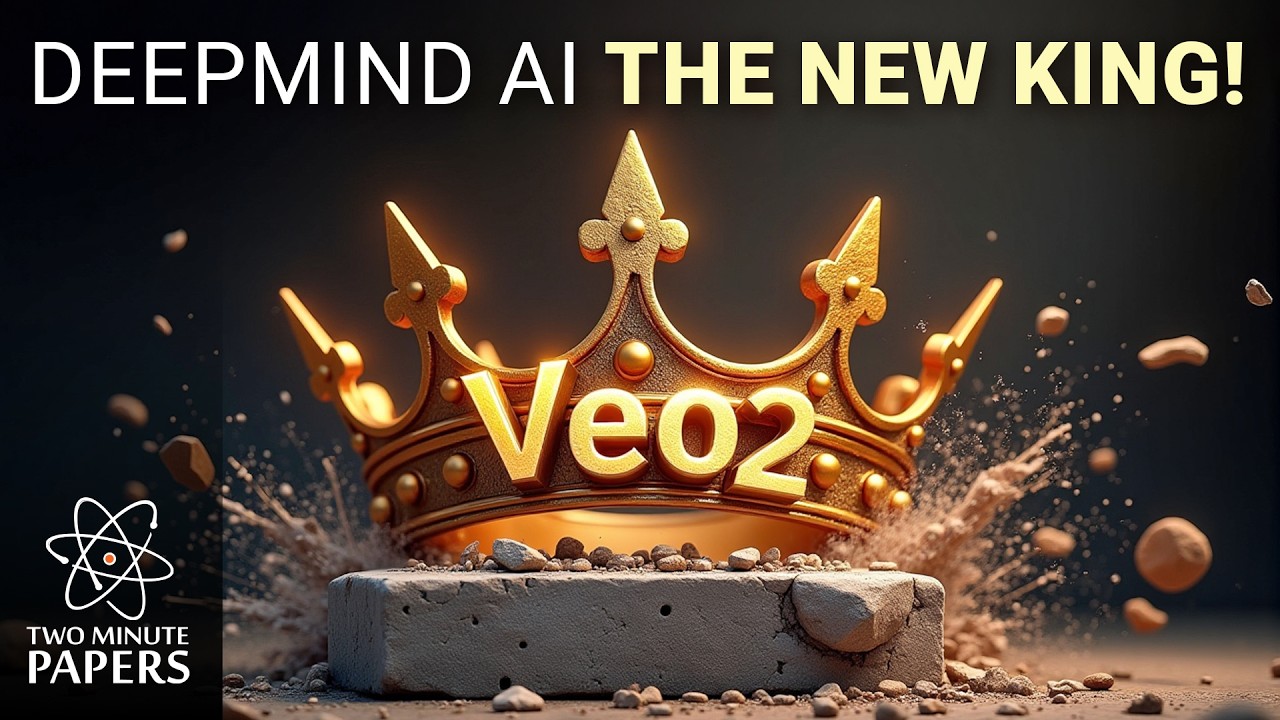In the video, Dr. Károly Zsolnai-Fehér introduces DeepMind’s Veo 2, a groundbreaking AI video generator that produces stunning 4K videos from simple text prompts, showcasing significant advancements over previous models. While Veo 2 excels in generating high-quality visuals and coherent animations, it still faces challenges with high-frequency motion and maintaining temporal coherence, indicating room for further improvement.
In the video, Dr. Károly Zsolnai-Fehér introduces Google DeepMind’s new AI video generator, Veo 2, highlighting its impressive capabilities compared to previous models like VideoPoet, which was considered state-of-the-art less than a year ago. Veo 2 can generate videos in stunning 4K resolution, showcasing a significant leap in quality and technology. The video aims to answer key questions about Veo 2’s functionalities, limitations, and how it stacks up against competitors like OpenAI’s Sora.
Dr. Zsolnai-Fehér, a computer graphics researcher, emphasizes the ease with which Veo 2 can create high-quality visuals from simple text prompts, eliminating the need for complex physics simulations that were previously required. The AI demonstrates remarkable proficiency in generating lifelike human figures and coherent animations, making it possible to visualize imaginative worlds that may not exist in reality. The advancements in AI video generation are portrayed as groundbreaking, with the potential to revolutionize content creation.
Despite its impressive capabilities, Veo 2 is not without limitations. The video discusses issues related to high-frequency motion, such as skateboarding, where temporal coherence problems can arise, leading to flickering effects. Additionally, there are instances where human figures appear with low resolution or exhibit morphing issues when turning away from the camera. These challenges highlight the ongoing need for improvement in AI-generated video quality.
The underlying technology of Veo 2 is based on a diffusion transformer model, which organizes noise into coherent video frames over time. Unlike text-to-image models, video generation requires maintaining consistency across multiple frames to avoid flickering. The video explains that achieving long-term temporal coherence involves refining multiple noise batches simultaneously while considering the relationships between all frames, which is a complex task that the AI is still improving upon.
In a comparative analysis, Dr. Zsolnai-Fehér concludes that Veo 2 significantly outperforms its competitors, particularly in terms of overall quality and adherence to text prompts. The results indicate that Veo 2 not only produces visually stunning videos but also closely aligns with user requests, making it a powerful tool for creators. The video ends on an optimistic note, expressing excitement for the future of AI video generation and inviting viewers to share their thoughts and experiences with Veo 2.
